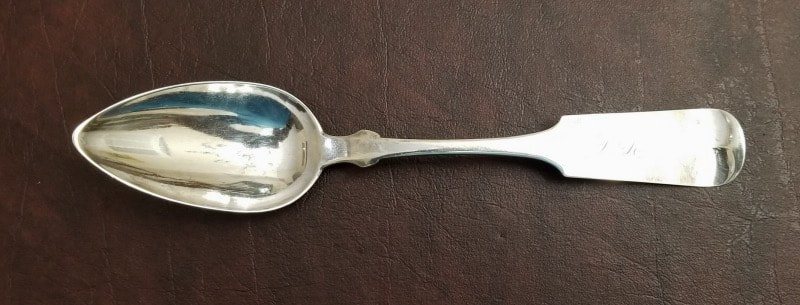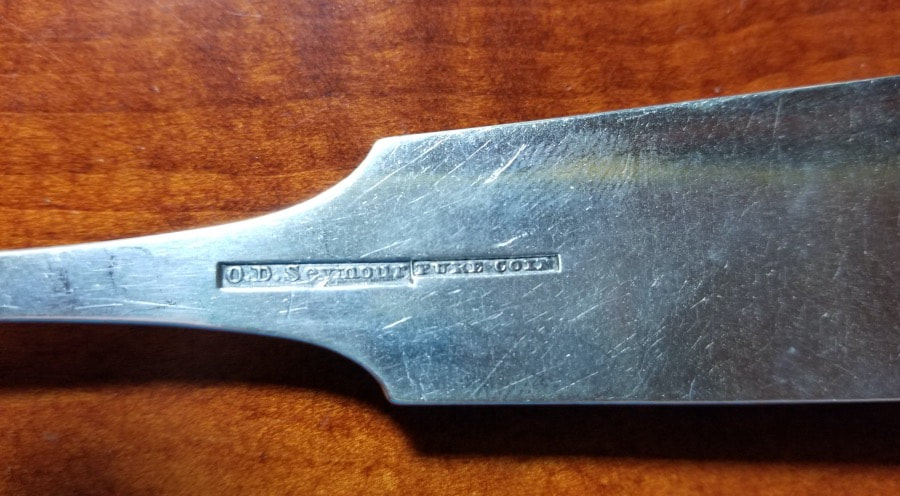|
With precious metals prices at strong levels, it is more important than ever to make sure you don't miss gold or silver when bringing estate items to market. Most everyone knows to look for the all-important "sterling" mark on a piece of flatware or hollowware but coin silver an easily get overlooked.
What is coin silver? It is the grade of silver used by American silversmiths prior to the establishment of the assay system in the late 19th century. The term is derived from the fact that the silver content was the same as that used for coins of the day. Typically, coin silver is almost identical to sterling silver in purity and sometimes exceeds it. Marking was sporadic... typically, the maker's name would be stamped and occasionally the phrase,"pure coin". In many cases, there is only a single symbol which makes identification of the maker challenging. Still other pieces bear "pseudo hallmarks", which were meaningless symbols made to imitate the marks of British silver, which was considered superior at the time. One tipoff that an item might be coin silver will be the form. On flatware, especially spoons and ladles, the handles typically are simple affairs in a fiddle shape. On especially early pieces, you might also see that the bowl and handle were two separate pieces that were joined together. Yet another tipoff is the absence of any mark such as EPNS denoting silver plate. Lastly, coin items when polished will look like sterling plus will often be fairly light since there is no base metal, as in plated items. Like most sterling pieces, coin silver items are typically going to be worth their melt value more than anything else. The exception will be when the piece is by a prominent silversmith or is a fine example of silversmithing, such as an ornate teapot or ladle. There are several reference books available to identify early American silversmiths as well as one or two free online databases. These are always worth checking since some makers can bring considerable sums. Paul Revere, of course, is perhaps the most famous but certain southern makers, especially from Charleston and New Orleans, can bring handsome sums as well. |
AuthorBryan H. Roberts is a professional appraiser in Sarasota, FL. He is a member of the Florida State Guardianship Association and currently serves on the board of the local FSGA chapter. He is a past president of the Sarasota County Aging Network, a non-profit that provides grants to other non-profits benefiting seniors in need and is also a board member of PEL, an area non-profit whose resale store profits support programs and scholarships for at-risk and disadvantaged youth. He is certified in the latest Uniform Standards of Appraisal Practice (USPAP) Equivalent Archives
May 2024
Categories |



 RSS Feed
RSS Feed